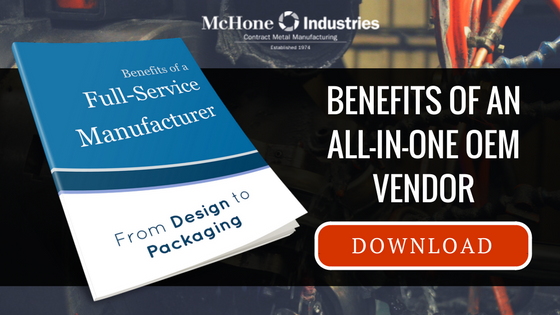
Industrial sheet metal is one of the fundamental materials of metalworking. Many metal objects in shops and homes were fabricated from sheet metal.
Despite its everyday presence, you might want to learn more about its uses, processes, and history. We’ve got you covered.
And if you’re really new to metal manufacturing, start with this primer.
Fun Facts About Sheet Metal
1. Leonardo da Vinci was one of the first to use roller, cutter, and press technology.
Other historical fun facts:
- Plate Armor -- Sheet metal forming has historically been highly valued, largely because times of peace were rare. Metal has long been used to make offensive weapons, but armor was an innovative use for sheet metal for early cavalries.
- Ancient Egypt -- Ancient Egyptians are chief innovators of many things - including sheet metal products. They used sheet gold and silver to create exquisite jewelry.
- Early Metal Forming -- Scholars estimate sheet metal was first used between 5,000 to 4,000 BC. Back then, people had to use stones to work the metal into their desired shape. Today, machines make metal forming easy and efficient.
2. Sheet metal demand led to the invention of press brakes and the assembly line.
Recorded history shows sheet metal fabrication has played a fundamental role in the development of many technologies that changed the way we live. Other breakthroughs included:
- Press Rocker -- Starting in the mid-1600s, the press rocker was widely used throughout Europe, and the technology remained in use until the early 20th century.
- Hydraulic Press -- In 1770, British industrialist Joseph Bramah invented the initial hydraulic press.
3. Sheet metal is the middle child.
There’s a pretty darn good chance you’d heard of industrial sheet metal before you opened this article. After all, it’s the most common type of metal in manufacturing.
But did you know it’s one of three major categories of metal, denoted by thickness? Unsurprisingly, sheet metal is middle-of-the-road in terms of thickness. Here’s the breakdown:
- Foil or leaf metals are the thinnest, typically 0.20 mm and under.
- Sheet metals range from 0.20 mm to 6 mm.
- Plate metals are the thickest, typically larger than 6 mm.
Gauge -- In the United States, we commonly specify industrial sheet metal thickness by a traditional, non-linear measure known as gauge. A bigger gauge number equals a thinner metal. For example, the most popular sheet metal sizes ranges from 30 gauge to about 7 gauge.
4. Platinum sheet metal is also used as a catalyst.
Manufacturers can form sheets from a variety of metals. Functional, sturdy items can come from:
- Aluminium
- Steel
- Brass
- Copper
- Tin
- Nickel
- Titanium
For decorative uses, popular industrial sheet metals include:
- Silver
- Gold
- Platinum
5. Sheet metal is used pretty much everywhere.
We mentioned the good ol’ days, but where can you apply sheet metal today? If you answered, “Pretty much anywhere,” you are correct.
Sheet metal is used for automobile bodies, airplane wings, roofs, medical tables (stainless steel provides that shiny, sterile surface you’re familiar with), and many other applications.
Sheet metals made of iron and other magnetic materials are useful in electric machines and transformers. You may know these components as laminated steel cores.
Sheet metal also has numerous decorative applications, including in horse tack.
The More You Know

Now that you’re more familiar with sheet metal, you can learn how to best apply it to your project. There are plenty of resources online -- such as this guide to choosing between laser and plasma cutting for sheet metal fabrication. Good luck!


